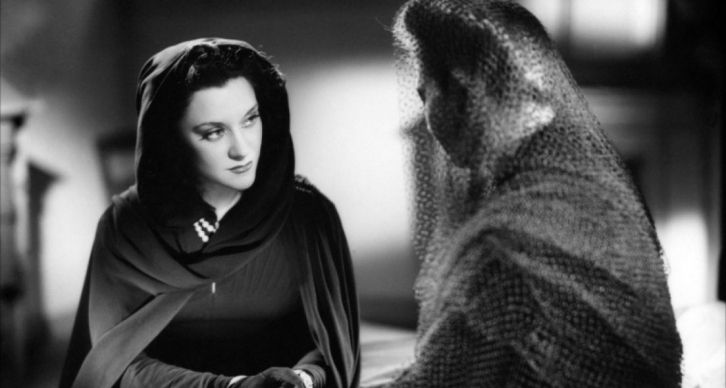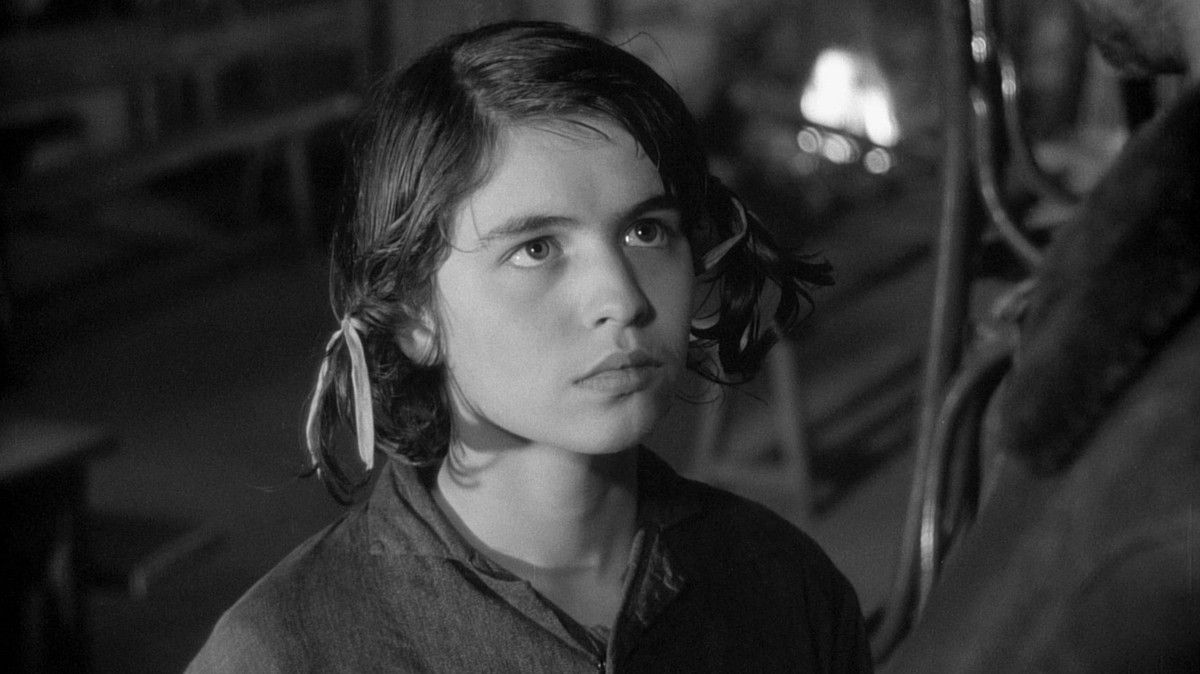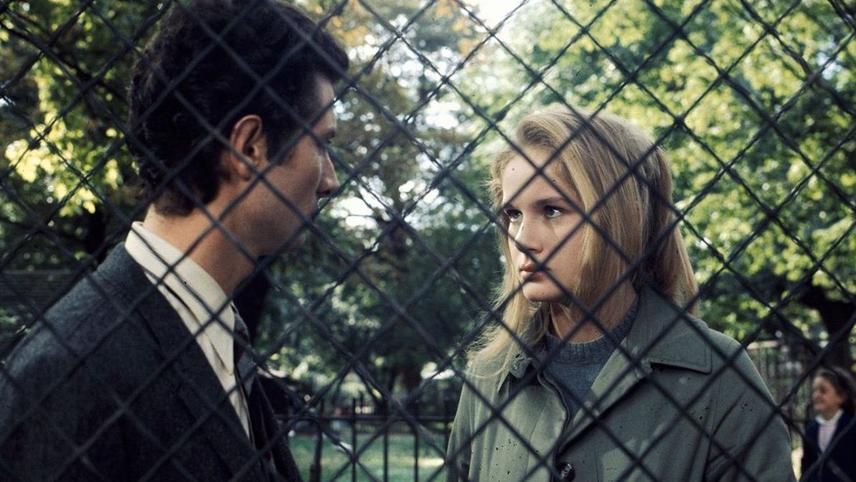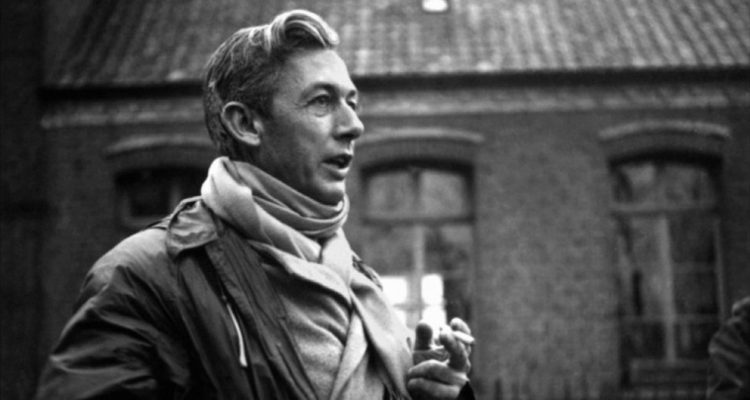Robert Bresson is French cinema as Dostoievsky is the Russian novel and Mozart is German music.
Jean-Luc Godard
We all wanted to be Bresson.
Louis Malle
Robert Bresson was one of the first film-makers I was interested in. He was part of my first period of interest in film, when Godard's A bout de souffle opened to me the doors of cinema. After JLG, I followed with the films of the Nouvelle Vague and its closest associates: Melville and Bresson. However, despite the admiration that Truffaut and Godard had for Bresson, his aesthetics and themes were very far from the youthful bliss that identifies the NV. His style is ascetic; his themes are religious and centered on grace, martyrdom, and redemption.
In this article, we are going to try to divide Bresson's works into two blocks opposed ideologically. Before these two blocks, his works formed part of a formative period in which the former painter got the ropes of the profession and started exploring his thematic and aesthetic interests. Then he started his first period as a mature artist, once in which Bresson consistently produced a series of Catholic films that were focused on the idea of Grace. This period starts with Diary of a Country Priest in 1951 and ends in 1965 with Mouchette. After this film, Bresson oeuvre changes ideologically: his films in this period are focused on the troubles of the modern man. In this phase, he seems to forsake the possibility of redemption. The period starts in 1969 with Une Femme Douce and ends with his last film, L'argent. One of my targets writing this article is to celebrate these late Bresson films, in particular Une femme Douce, which are not much discussed in comparison with his previous ones. Nevertheless, they may be the best he ever filmed.
Apart from these blocks, there are two movies that stand alone in his oeuvre, two films that are important in his filmography for different reasons. One is Bresson's universally acknowledged masterpiece, A man escaped; in an interview, he called it the first film in which "I began to understand what I needed to do". It is true that A man escaped could be seen as part of the Catholic period; however, it is not so openly religious as the others, and I prefer not to include it with the rest.
The other film that stands alone, is a project Bresson tried to get done for more than 20 years, Lancelot du Lac, Bresson's only period piece.
Learning to paint in film: the formative years
Originally a painter, Bresson had his first experience as a film director in 1933, with the short Public Affairs (1934). This short film was not succesful, and stopped his career for a while. During World War II, he spent over a year in a camp as a prisoner of war. Once freed, and still during the Nazi occupation of France, Bresson directed the two movies that form the bulk of his formative period: the feature films Angels of Sin (1943) and Les Dames du Bois de Bologne (1945). In these movies, one can find elements that Bresson would reject later; for example, professional actors, and plenty of "music from an invisible orchestra" (non-diegetic), as Bresson would say.
Despite being quite mainstream in its form, Angels of Sin is incredibly Bressonian in its themes. The film is focused on a group of nuns that rehabilitates former convicts. Expiation, prison, faith: c'est Bresson. Unfortunately, its form makes it a pretty conventional picture, with actors that (the horror!) act. Bresson still had to master that, in his own words:
It is impossible to copy life, you don't create life, you create something false. I believe that mechanization provides a way to get to truth, even to reality. [1]
Notice that, for Bresson, truth comes before reality.
The second and last film of this period, Les Dames du Bois de Bologne, would be the last time Bresson would use professional actors. The movie is an adaptation of Diderot, a drama of seduction and misunderstanding, a la Dangerous Liaisons. One can hardly imagine a subject further from the interests of its author. And yet... the film is the first great Bressonian masterpiece. Les Dames du Bois de Bologne is a masterpiece of emotion and psychological depth through contention.

To Grace through Martyrdom: The Catholic period
I am Catholic. That isn't a question I ask myself. Faith is in me, it is me. [2]
Robert Bresson's Catholic period lasts from 1951 to 1968 and includes all the films done during these 18 years, with the exception of A man escaped (1956), of which I have already talked. These films are:
- Diary of a Country Priest (1951)
- Pickpocket (1959)
- The Trial of Joan of Arc (1962)
- Au Hasard Balthazar (1966)
- Mouchette (1967)
Four of the five movies of the period adapt important Christian texts. The period opens and closes with adaptations of the Roman Catholic, monarchist Georges Bernanos. The second film, Pickpocket, is an original story; however, it is clearly derived from the most famous novel of a very Christian writer; Dostoievski's Crime and Punishment. The third film, The Trial of Joan of Arc portrays the last days of the Christian martyr and saint by adapting the original text of Joan's trial.
The fourth film is the only one that does not adapt a text: Au Hasard Balthazar, is a completely original story. Nevertheless, it may be an even finer exploration of the idea of martyrdom present in each and every movie of this period. In it, Bresson traces a parallelism in between the unfortunate life of a donkey and the misfortunes of a young woman.
I like to summarize the ideology of Bresson during these years with the following sentence: to Grace through martyrdom. All the main characters can be understood as martyrs; in the last 3, this martyr figure is particularly clear. The three of them are young, innocent women that suffer in the hands of a society that overpowers them. They don't fight, they just suffer.
Grace is the other important concept. Grace in the context of Bresson works needs to be understood as a kind of spiritual redemption: like in Pickpocket (or in Crime and Punishment), the character may still be punished, but his soul is already saved. Again, 3 films end with a particularly clear depiction of Grace: Pickpocket, The Trial of Joan of Arc and Mouchette.
Mouchette contains both the clearest depiction of martyrdom and of Grace in the whole Bresson filmography: in a way, it's his most representative film. Its dramatic closure also marks the most important change in the whole trajectory of its author. In the ending of Mouchette, the eponymous child-martyr protagonist commits suicide. Just after the fact, still in the same shot Bresson plays Monteverdi's Magnificat: one of the rare examples of non-diegetic music in his works. This is probably the greatest apparition of Grace in his cinema; it's also the last. In the future, Bresson will continue being interested in the "inner movements" of the human soul, but in a much more somber way.

Beyond Grace: The sorrows of the modern man
I used to be able to separate myself from the preoccupations of our times, but I can't any longer. [3]
Bresson's last period lasts from 1968 to Bresson's death in 1999. It includes four films; all the ones he directed during this period with the exception of Lancelot du Lac (1974):
- Une femme douce (1969)
- Four Nights of a Dreamer (1971)
- The Devil Probably (1977)
- L'argent (1983)
Like in the previous period, all the films are adaptations, with the exception of one. This phase is completely dominated by Russian literature: if in his Catholic period Bresson had adapted Bernanos twice, in the last 15 years of his career he will adapt Dostoievski twice, and Tolstoi once. This is an important change from a theological perspective; neither Dostoievski, nor Tolstoi were Catholics: both were Orthodox, and both had very personal views on religion, far from the more traditional Bernanos. Tolstoi's faith was deeply humanistic and unorthodox, something that brought him into conflict with the religious authorities and Russia, and caused him to be excommunicated 9 years before his death. Dostoievski's case is more complicated, as his faith was mystic, of an almost shamanistic nature that would have fit the concept of martyrdom so important on Bresson's Catholic phase.
Formally, this new period does not only show a change in themes but a technical one too. Before Mouchette, all of Bresson's films had been in black and white. From now on, all of them will be in color.
The period opens with the suicide Elle, the main character of Une femme douce. If Bresson had ended his stage of Catholic angst with the suicide of a female heroine, Mouchette, he decides to open a new period in his artistic life will start in the exact same way. Nevertheless, a lot of things had changed in between these two suicides. There is no monterverdian harmony to cradle Elle into Grace/Heaven; there is just the nothingness. Une femme douce is a psychological masterpiece of nihilism and despair: the movie starts with a suicide, and it's all about explaining the reasons for that suicide. There is never a justification of it, but at the same time, it is impossible not to feel that it's the only appropriate response that innocent, gentle creatures such as Elle can give to the wicked human nature. Une femme douce is the best adaptation of Dostoievski ever done, and one of the deepest psychological movies I have ever had the pleasure to watch.

The other three films of the period widen the schism with his previous views on humankind. The three of them have martyrs of sorts: but all of them refuse their destiny, and take action to avoid their destiny. There is no more willing acceptance of fatality in the name of Trascendence; there is struggle. In this regard, Bresson's last movie, L'argent, is particularly interesting: the fatality that devours the martyr protagonist is of a social type. L'argent could have opened the door for a non-religious, social Bressonianism.
Addendum: Simone Weil, editing and T/truth in Bresson's cinema
The following ideas are not directly related with the main idea of the article, but lately I have been thinking about Bresson's style, and I think it's worth sharing my speculations.
While researching for this article, I found an article with this very interesting quote about the relationship in between Simone Weil's thought and Bresson's art. For reasons of time I couldn't explore this more, but I think it's worth sharing it with you:
In Weil's religious thinking, the possibility of achieving a state of automatism in the soul, and thus leaving room for God to occupy all, was central. “Decreation,” her term for this principle, sounds like a will to suicide (a recurring theme in Bresson) but she explains it as motivated by love. [4]
Next. The following is a very interesting quote from an interview with Bresson. It shows how much his art is based on editing:
If there's one thing of primary importance in a film, as I understand the art, it must be rhythm. Everything is communicated through rhythm. [...] But everything you see happening did not happen before the camera; it happened in the editing room. It's in the editing process that connections appear. Editing creates. The camera is a recording tool, with the -happily!- indifferent precision of a machine. But the drama is created during the editing. Only when the images are put in contact with each other, and with sounds, can love arise. [1]
Another great quote on editing, this time from Notes about the Cinematographer:
An image must be transformed by contact with other images as is a color by contact with other colors. A blue is not the same blue beside a green, a yellow, a red. No art without transformation.
Bresson's editing is very far from being spectacular, a la Eisenstein or Leone. Still, it's probably the central element of his cinema.
The other point I wanted to touch before closing the article is Truth. Truth, in Bresson, is something bigger than reality, a reality that I like to call truth, with small "t". It is true that Bresson firmly believes in the incredible power of the camera, but he is certainly not close to realism.
In my Trial of Joan of Arc I have tried to avoid “theater” and “masquerade”, but to arrive at a non-historical truth by using historical words.
A non-historical truth. Bresson depicts the trial of Jeanne of Arc in a non-historical way, which means non-realistic. That summarizes Bresson's philosophy and art: Truth beyond, over, reality/truth. And for that Truth to exist, we need a God, or at least, the Spirit.
[1]: "For the Pleasure of It", Radio-Television Française, 1966 [2]: "The Cinema According to Bresson", Les Nouvelles littéraires, May 26, 1966. [3]: "Interview with Robert Bresson by Serge Daney and Serge Toubiana", Cahiers du cinéma, June-July 1983. [4]: "What does it Matter? All is Grace", Journal of the Theoretical Humanities, Volume 17, 2012
